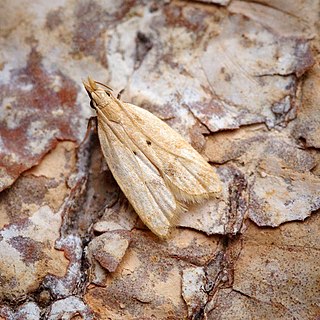 W
WAcompsia schmidtiellus is a moth of the family Gelechiidae. It is found in central, eastern and southern Europe, from Denmark to southern Spain and Portugal. In the east, the range extends to Ukraine.
 W
WAcrobasis exsulella, the cordovan pyralid moth, is a species of snout moth in the genus Acrobasis. It was described by Philipp Christoph Zeller in 1848, and is known from the southeastern United States.
 W
WAcrobasis indigenella, the leaf crumpler, is a species of snout moth in the genus Acrobasis. It was described by Philipp Christoph Zeller in 1848, and is known from eastern North America.
 W
WAcrobasis sodalella is a moth of the family Pyralidae. It was described by Philipp Christoph Zeller in 1848 and is found in Europe.
 W
WAgathia lycaenaria is a species of moth of the family Geometridae first described by Vincenz Kollar in 1848. It is found from India to Australia.
 W
WAgrotis graslini, or Woods's dart, is a moth of the family Noctuidae. The species was first described by Jules Pierre Rambur in 1848. It is known from coastal dunes in the western Mediterranean region. It was found on Jersey in 2001. Further investigations revealed that the species had been present there since at least 1995.
 W
WAncylosis oblitella is a species of snout moth in the genus Ancylosis. It was described by Zeller, in 1848. It is found in most of Europe.
 W
WAphomia terrenella, the terrenella bee moth, is a moth of the family Pyralidae. It is found in North America from Michigan, Ontario, Quebec and New York south to Georgia.
 W
WBucculatrix ulmella is a moth of the family Bucculatricidae. It is found in most of Europe, except the Iberian Peninsula, Slovenia and Bulgaria. It was first described in 1848 by Philipp Christoph Zeller.
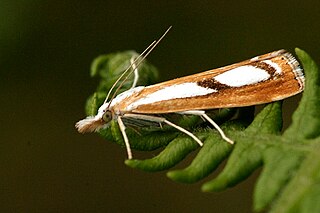 W
WCatoptria permutatellus is a species of moth of the family Crambidae. It is found in Europe. The imago can only be distinguished from Catoptria osthelderi by microscopic research of the genitalia.
 W
WChionodes violacea is a moth of the family Gelechiidae. It is found from Scandinavia to Russia and Mongolia.
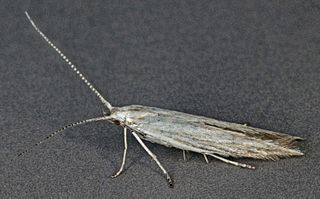 W
WColeophora striatipennella is a moth of the family Coleophoridae that is found in Europe and Near East.
 W
WColeophora therinella is a moth of the family Coleophoridae found in Asia and Europe.
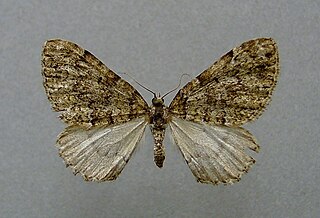 W
WColostygia kollariaria is a moth of the family Geometridae. It is found in the Alps and the Carpathian Mountains on altitudes between 500 and 2,000 meters.
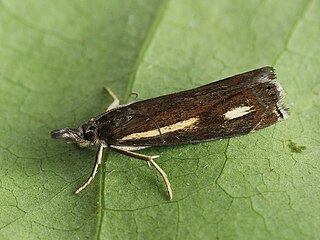 W
WCrambus heringiellus is a species of moth in the family Crambidae described by Gottlieb August Wilhelm Herrich-Schäffer in 1848. It is found in Italy, Germany, Poland, Denmark, Fennoscandia, the Baltic region, Belarus and Russia.
 W
WDepressaria sordidatella is a moth of the family Depressariidae. It is found in most of Europe, except Ireland, Portugal, Belgium, Ukraine and most of the Balkan Peninsula.
 W
WDoloessa viridis is a species of snout moth in the genus Doloessa. It was described by Philipp Christoph Zeller in 1848 and is known from Indonesia, Malaysia, Sri Lanka, China, Australia (Queensland), Taiwan, the Philippines and the Solomons.
 W
WDrasteria caucasica is a moth of the family Erebidae. It is found in Romania, north-eastern Bulgaria, southern Moldova, southern Ukraine, Russia, Kazakhstan, Turkey, Daghestan, Armenia, Iraq, Iran, Turkmenistan, Uzbekistan, Tadjikistan, Afghanistan, Pakistan, Kyrghyzstan, China and Mongolia.
 W
WEctoedemia intimella is a moth of the family Nepticulidae which is found in Europe. It flies in June and July and the larva mine the leaves of willows from July to November.
 W
WElachista albidella is a moth of the family Elachistidae, described by William Nylander in 1848. Its wingspan ranges from 9–10 millimetres (0.35–0.39 in). The Elachista albidella is found from Fennoscandia and northern Russia to the Pyrenees, Italy and Hungary and from Ireland to Ukraine. It is also found in North America.
 W
WElachista bedellella is a moth of the family Elachistidae found in Europe.
 W
WElachista biatomella is a moth of the family Elachistidae found in Europe.
 W
WEpinotia nemorivaga, the bearberry bell, is a species of moth in the family Tortricidae. It is found in Europe and Asia.
 W
WErateina julia is a species of moth in the family Geometridae first described by Edward Doubleday in 1848. These day-flying moths are typically montane and can be found in Neotropical cloud forests of Bolivia.
 W
WEtiella behrii is a species of moth of the family Pyralidae. It is found in Hong Kong, Indonesia, Malaysia and most of Australia.
 W
WEudonia petrophila is a species of moth in the family Crambidae. It is found in Spain, France, Italy, Switzerland, Austria, Germany, Poland, the Czech Republic, Slovakia, Bosnia and Herzegovina, Serbia and Montenegro, Romania, Albania and the Republic of Macedonia.
 W
WEupithecia distinctaria, the thyme pug, is a moth of the family Geometridae. It is found throughout Europe. It is also found in Iran.
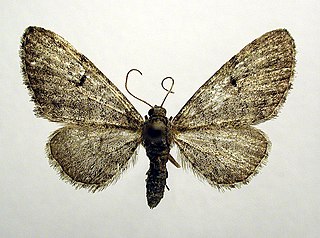 W
WEupithecia egenaria, the pauper pug, is a moth of the family Geometridae. It is known from almost all of Europe, except Portugal, Ireland and the southern part of the Balkan Peninsula.
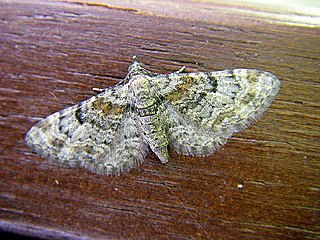 W
WEupithecia laquaearia is a species of moth in the family Geometridae. It is found in central and southern Europe and Russia.
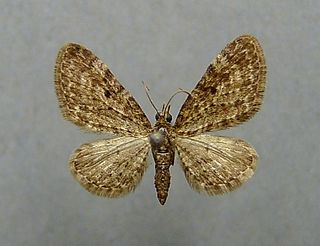 W
WEupithecia silenata is a moth of the family Geometridae. It is found in the mountainous areas of central and southern Europe, in the east, the range extends to the Krkonoše mountains and the Caucasus.
 W
WEupithecia sinuosaria, the goosefoot pug, is a moth of the family Geometridae. It is endemic to Eastern Asia, but has expanded its range to Central Europe.
 W
WEupithecia trisignaria, the triple-spotted pug, is a moth of the family Geometridae. It is found from across the Palearctic realm from Europe to Siberia.
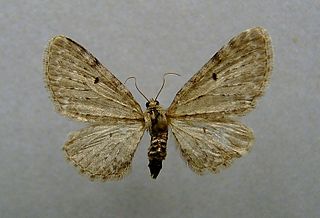 W
WEupithecia veratraria is a moth of the family Geometridae first described by Gottlieb August Wilhelm Herrich-Schäffer in 1848. It is found from the mountainous areas of Europe and Asia up to Japan.
 W
WEurrhypis guttulalis is a species of moth in the family Crambidae. It is found in France, Spain, Portugal, Italy, Croatia, Bosnia and Herzegovina, Romania, Bulgaria and Greece.
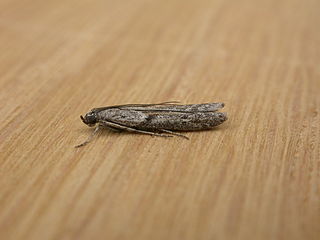 W
WHomoeosoma vagella, the macadamia flower caterpillar, is a species of snout moth in the genus Homoeosoma. It was described by Philipp Christoph Zeller in 1848. It is found in Australia.
 W
WHyalurga mysis is a moth of the family Erebidae. It was described by Wilhelm Ferdinand Erichson in 1848. It is found in Guyana.
 W
WHypsipyla grandella is a moth of the family Pyralidae. It is found in southern Florida, most of the West Indies, Sinaloa and southward in Mexico, Central America, South America except Chile and in Mauritius.
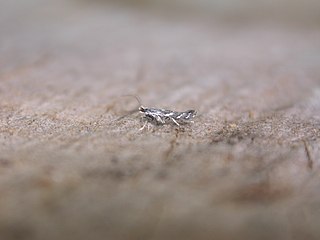 W
WLeucospilapteryx omissella is a moth of the family Gracillariidae. It is known from all of Europe, east through Russia to Japan.
 W
WLoxophlebia diaphana is a moth of the subfamily Arctiinae. It was described by Sepp in 1848. It is found in the Amazon region.
 W
WMacaria ribearia, the currant spanworm, is a species of geometrid moth in the family Geometridae. It is found in North America.
 W
WMonopis spilotella is a moth of the family Tineidae. It was described by Johan Martin Jakob von Tengström in 1848. It is found in Scandinavia, Denmark, the Baltic region and Ukraine and Russia. It is also found in North America.
Myrmecozela ochraceella is a moth of the family Tineidae. It is found in Great Britain, Fennoscandia, Russia, Estonia, Poland, Hungary, Romania, Austria, Switzerland, Italy, France and Spain.
 W
WNiditinea truncicolella is a moth of the family Tineidae. It was described by Johan Martin Jakob von Tengström in 1848. It is found in Spain, Germany, Switzerland, the Czech Republic, Slovakia, Estonia, Latvia, Norway, Sweden, Finland and Russia.
 W
WNorape ovina, the white flannel moth, is a moth of the Megalopygidae family. In the United States, it is found from Washington, D.C. south to Florida, west to Montana and Texas. Its range extends further south through Mexico, Guatemala and Panama to Venezuela, Suriname and Bolivia.
 W
WThe northern deep-brown dart is a moth of the family Noctuidae. It was first described by Christian Friedrich Freyer in 1848 and it is found in northern and western Europe. As the common name suggests, this species usually has very dark brown to purplish grey forewings, although paler grey forms exist. There is always a much darker central band, almost black in the darker forms.All the lines and stigmata very neatly marked and edged with paler.By contrast, the hindwings are much paler, often almost pure white in the male but usually with darker venation. The wingspan is 36–41 mm.It is a decidedly smaller and neater insect than Aporophyla lutulenta. It flies at night in August and September and is attracted to light and sugar as well as various flowers.
 W
WPerittia obscurepunctella is a moth of the family Elachistidae found in Europe.
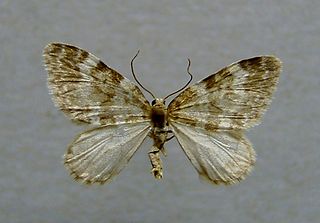 W
WPerizoma incultaria is a species of moth of the family Geometridae. It is found from the Alps to the Carpathian Mountains and the mountains of the Balkan Peninsula.
 W
WPhycitodes maritima is a species of snout moth. It is found in most of Europe.
 W
WPhyllodes consobrina is a noctuoid moth in the family Erebidae and subfamily Calpinae. It was first described by John O. Westwood in 1848. The species can be found in Asia, including Thailand, Sri Lanka, Bangladesh, the Andamans and India.
 W
WPococera militella, the sycamore webworm, is a species of pyralid moth in the family Pyralidae.
 W
WPococera robustella, the pine webworm moth, is a species of moth of the family Pyralidae. It is found in southern Canada and the eastern United States from Minnesota to New England and south to Florida.
 W
WScythris disparella is a moth of the family Scythrididae. It was described by Johan Martin Jakob von Tengström in 1848. It is found from Europe to the southern Urals.
 W
WStigmella nylandriella is a moth of the family Nepticulidae. It is found in all of Europe, east to Russia, where it has been recorded from Bryansk, Murmansk, Karelia, Leningrad and Voronezh.
 W
WUdea decrepitalis is a moth of the family Crambidae described by Gottlieb August Wilhelm Herrich-Schäffer in 1848. It is found in most of Europe, east into Russia.
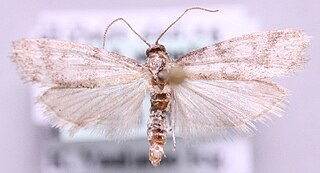 W
WVitula biviella is a species of snout moth in the genus Vitula. It was described by Zeller in 1848. It is found in most of Europe, except Ireland and the southern part of the Balkan Peninsula. It is only recently present in Great Britain. The first records were noted in 1997 and 1998 from Kent and the species now seems to have established small breeding populations in both Kent and Suffolk.